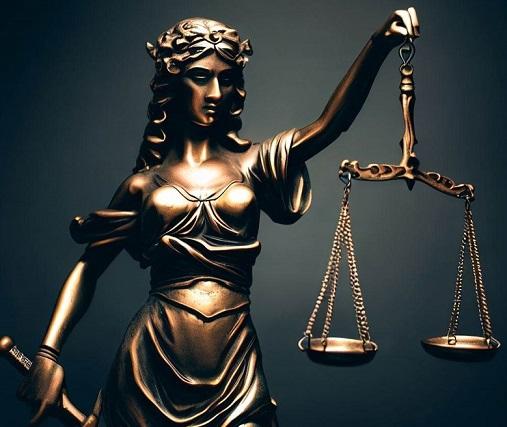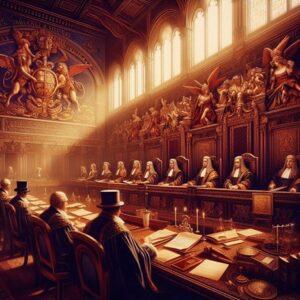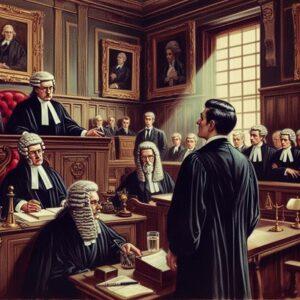Lady Justice, often depicted as a graceful figure holding a sword, scales, and sometimes wearing a blindfold, is an iconic symbol of the judicial system.
Her image evokes a sense of impartiality, fairness, and the pursuit of justice. Through the ages, Lady Justice has come to embody the ideals of a just society, representing the principles upon which legal systems are built.
In this article, we will explore the history, meaning, and significance of Lady Justice, focusing on the symbolism behind her scales, sword, and blindfold.
Historical Origins and Evolution
The origins of Lady Justice can be traced back to ancient Greek and Roman civilizations. In Greece, she was known as “Themis,” the daughter of Uranus (Heaven) and Gaia (Earth). Themis was the personification of divine law, order, and justice.
The Romans adopted this concept and named her “Justitia” – the goddess of Justice within Roman mythology. Over time, her imagery and symbolism evolved to what we now recognise as Lady Justice.
The Scales of Justice
One of the most prominent features of Lady Justice is the scales she holds in her hand. The scales symbolize the weighing of evidence and arguments in a court of law. They represent the need for a balanced and impartial consideration of facts and arguments before reaching a fair judgment. Lady Justice reminds us that justice must be meted out objectively, based on the merits of each case.
The Sword
Lady Justice also holds a sword. The sword represents the power and authority of the judiciary to enforce the law and protect society. It signifies the role of justice in upholding the rule of law and maintaining order. The sword reminds us that justice has the strength to cut through falsehoods, expose the truth, and hold accountable those who have violated the law.
The Blindfold
Lady Justice’s blindfold, if depicted, is a powerful symbol of impartiality and the fair application of the law. By covering her eyes, she demonstrates her commitment to judge each case solely on its merits, without bias or favouritism. The blindfold represents the ideal that justice should be blind to factors such as wealth, status, race, or gender. It ensures that all individuals, regardless of their background, are treated equally under the law.
It has been said that the addition of the blindfold in the 16th century was intended to show Lady Justice as blind to the injustice carried on before her.
The Fight Against Injustice
Lady Justice stands as a potent symbol in the ongoing struggle against injustice. Throughout history, societies have faced numerous instances of injustice, where the principles of fairness and equity have been disregarded. There have been many cases where the blindfold has been lifted, and justice has been influenced by prejudice, political pressure, or systemic biases.
Lady Justice serves as a constant reminder of the importance of upholding these principles and working towards a just society. She encourages us to fight against corruption, discrimination, and inequality, and to advocate for the rights of the marginalised and oppressed.
‘Injustice anywhere is a threat to justice everywhere’
Dr Martin Luther King, Jr
Conclusion
Lady Justice, with her scales, blindfold, and sword, represents the pillars of fairness, equity, and the pursuit of justice. Her image has evolved over time, reflecting the ideals of different civilizations.
Lady Justice serves as a constant reminder of the need for a balanced consideration of evidence, an unbiased application of the law, and the power of justice to combat injustice.
As society continues to strive for a just and equitable future, Lady Justice will remain an emblematic figure, inspiring us to fight for a world where fairness and equity prevail.
Check out our article on the highly questionable Sussex Family Justice Board and make up your own mind.
We recommend you should always seek formal legal advice if required, from a qualified and reputable lawyer (solicitor or barrister).
We have a number of links to Free Legal Resources and Legal Organisations on our Free Legal Advice , Legal Aid and Pro Bono pages.
Read the reviews of Gavin Howe Barrister
Latest Articles
- What is a Paralegal ?A paralegal is a legal professional who performs tasks that require knowledge of legal concepts but does not hold the… Read more: What is a Paralegal ?
- What is a Judgment ?A judgment, also known as a judicial decision or court ruling, is the final decision made by a court of… Read more: What is a Judgment ?
- What is an Adverse Inference ?Adverse inference is a legal principle that plays a significant role in various areas of law, including criminal, civil, and family law. It arises… Read more: What is an Adverse Inference ?
- BarristersA barrister is anyone who has been Called to the Bar in England and Wales. For a barrister to offer… Read more: Barristers




